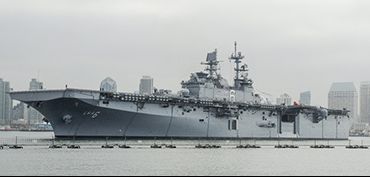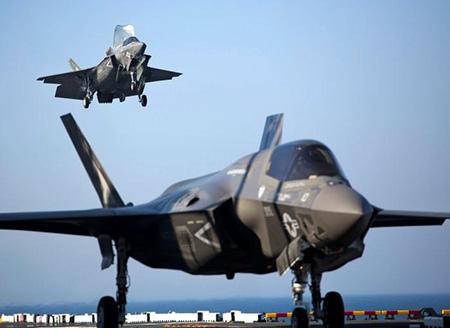To accommodate the aircraft, however, the ships would have required profound changes: new radars, landing systems, reinforcement structures for the resistance of the flight deck, remodulation of fuel storage lines and new hangars. The two assault ships were designed to transport helicopters.
They write from the Australian Financial Review. "There are too many technical difficulties to deal with. Modifying a ship designed to transport helicopters into a carrier equipped with fighter planes is too expensive ".
Therefore, Australia has officially closed the door to the F-35B. The 72 F-35A, two in production and two in training, remain confirmed for the Royal Australian Air Force. The pilots will achieve the patent at Luke Air Force Base, in Arizona. The HMAS Canberra and the HMAS Adelaide will be used mainly to transport assault troops and materials in the operational areas.
F-35B: a fighter for every navy?
"Where the AV-8B Harrier takes off and lands, so the F-35B can take off and land." This was one of the main commercials of version B of the JSF program to try to grab the attention and the contracts of the governments that have small aircraft carriers like Italy that formalized the purchase of thirty F-35B. But the Short Take Off and Vertical Landing variant of the Joint Strike Fighter needs special precautions compared to the Harrier.
The US Navy and the Marine Corps are building amphibious assault ships that will one day transport the F-35B to the globe. The first carrier will be ready within the 2018. The USS America (photo), an amphibious assault ship leader of the same class, needs 40 weeks of interventions (and copious investments), commissioned last October, to accommodate the first deployment of the F-35B.

In the US Navy's official note it is learned that the major changes will affect the flight deck. It will, therefore, be able to withstand the heat generated by the propulsion apparatus of the F-35B in vertical decoys and landings.
The new heat-resistant material has been designed to prevent the hunting heat from making a real "hole" on the flight deck. It was discovered, in fact, that the F-35 could also conceptually be similar to the Harrier, but it lands and takes off differently than the McDonnell Douglas fighter. Summing up to the max. The F-35B during take-off and landing on the deck of an aircraft carrier, reaches the thrust of 186 kN, that is the same energy produced by the engine with afterburner inserted.
Just to give an example: the most powerful engine ever installed on a Harrier is the Pegasus 11-61 / Mk.107, capable of generating a thrust of 106 kN. Hence the need to externally cover all the decks of the ships that will host the F-35B. The modifications involve the addition of additional intercostal structural elements at the landing points, consequent displacement of the pre-existing elements (lighting, ventilation, pipes) and redesign of some interior spaces.
The second America-class ship, the USS Tripoli, is still in the pipeline, but will be built with all the "F-35B" modifications already implemented during construction. "On Tripoli, the bridge is thicker and the structural supports for the bridge have already been made. The USS Tripoli will be delivered to the Navy in the 2019".
Franco Iacch
(photo: Lockheed Martin / US DoD)












